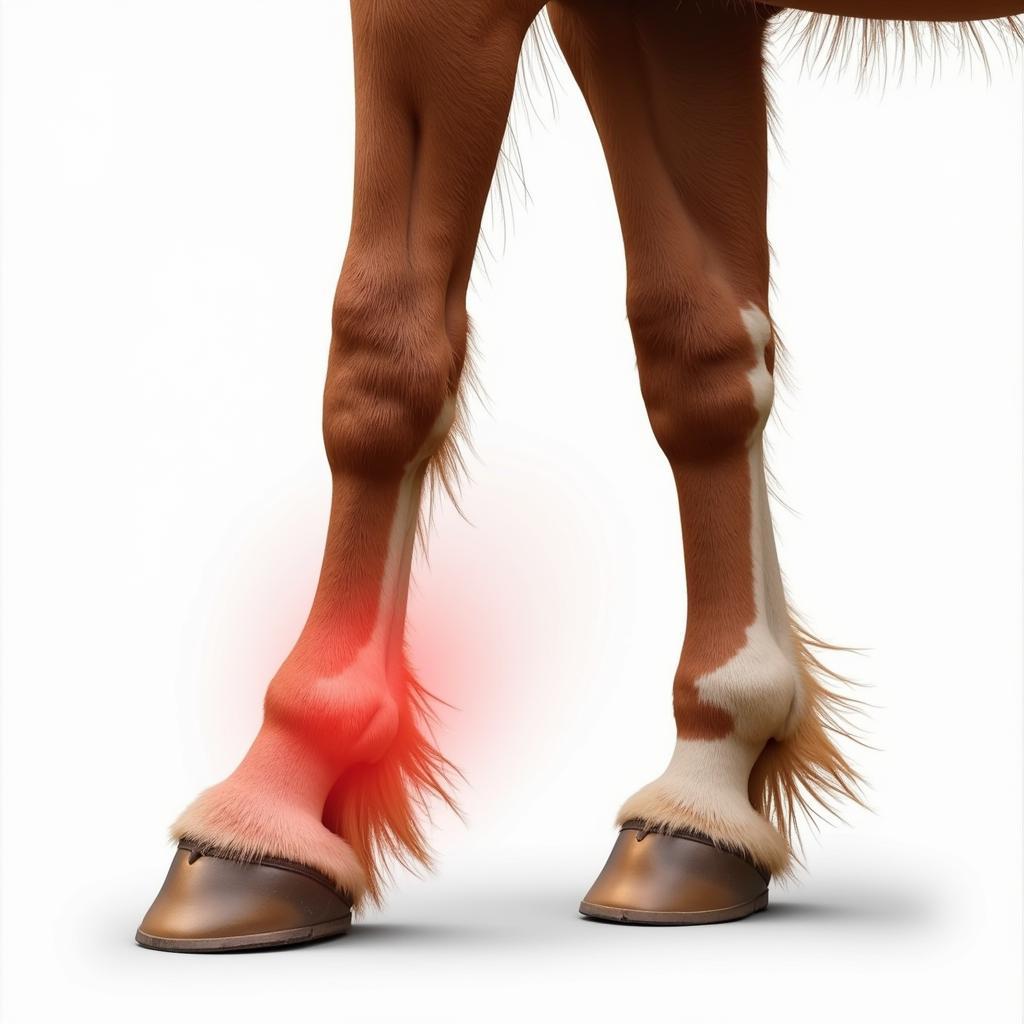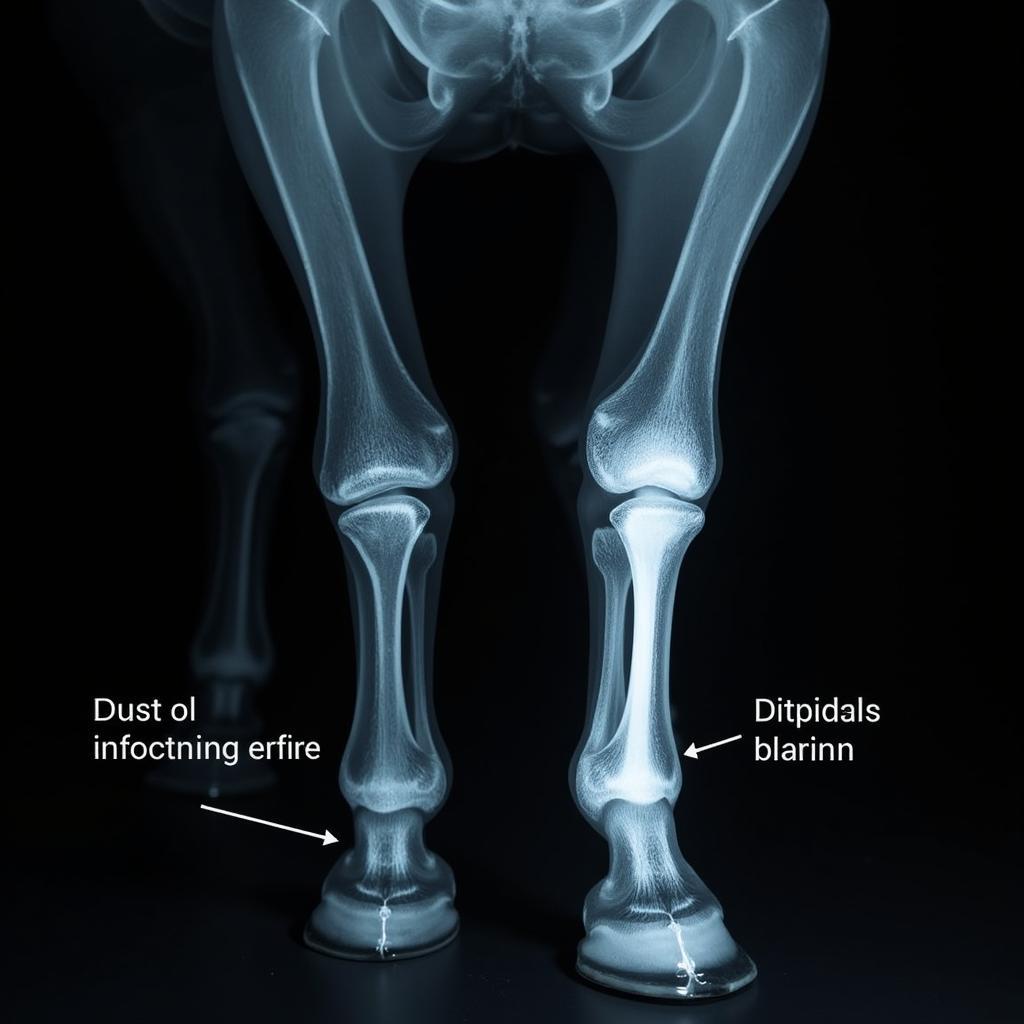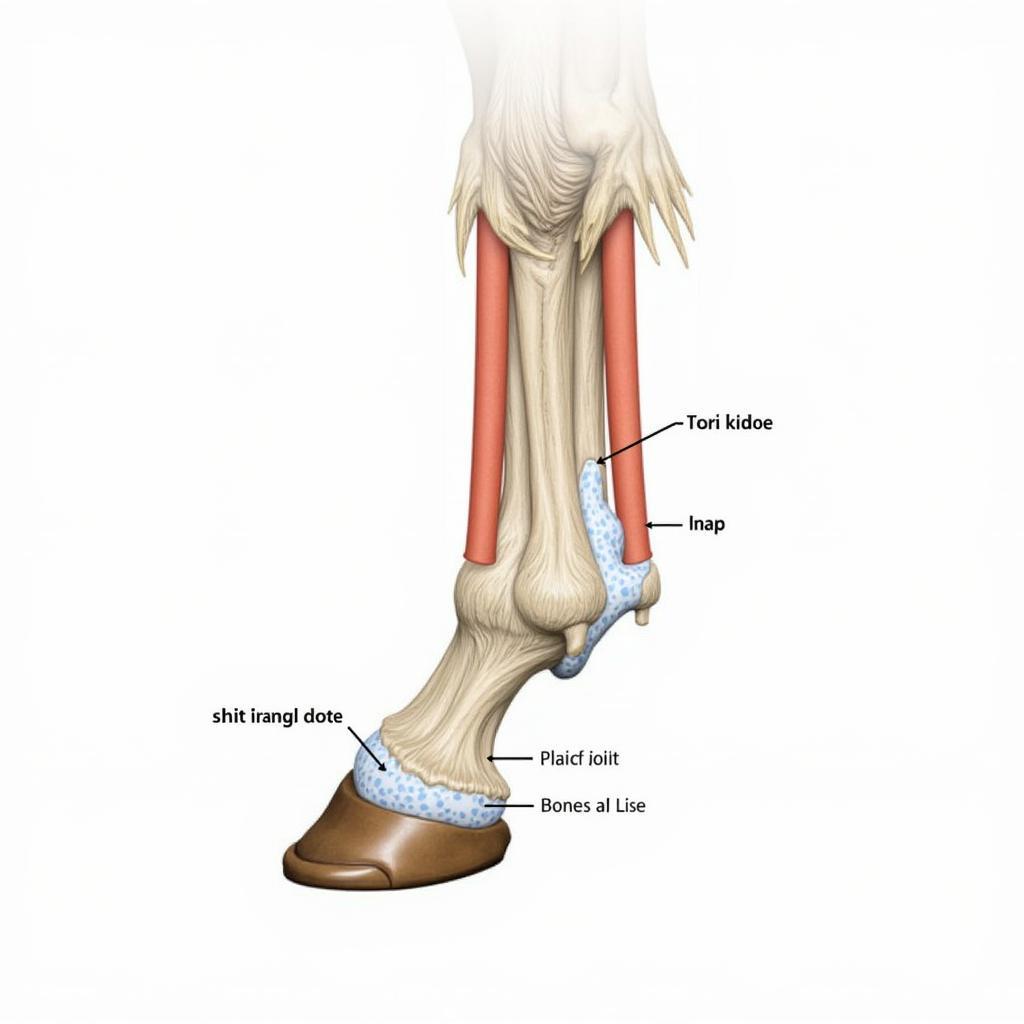Hock pain in horses is a common problem that can significantly impact a horse’s performance and overall well-being. Recognizing the Symptoms Of Hock Pain In Horses is crucial for early diagnosis and treatment. Understanding the underlying causes and addressing them promptly can help prevent long-term complications and ensure your horse stays healthy and happy.
As a horse owner, being attuned to subtle changes in your horse’s behavior and gait is essential. Early detection of hock pain allows for timely intervention, which can prevent the condition from worsening. This article will delve into the common signs and symptoms associated with hock pain, helping you better understand this complex issue and take the necessary steps to care for your equine companion. While Legend injection for horses might be a treatment option, understanding the symptoms is the first step. You can find more information about Legend injections on our website. legend injection for horses
Recognizing the Signs of Hock Pain
One of the most obvious signs of hock pain is lameness, particularly when the horse is turning or working on uneven ground. The lameness may be subtle initially, manifesting as a slight shortening of stride or reluctance to move forward. As the condition progresses, the lameness can become more pronounced.
- Stiffness: A horse experiencing hock pain often exhibits stiffness, especially after periods of rest. They may take longer to warm up and show reluctance to bend their hock joints.
- Swelling and Heat: Look for any noticeable swelling or heat around the hock joint. This is a clear indication of inflammation and potential pain.
- Difficulty Backing Up: Backing up can be challenging for horses with hock pain, as this movement puts significant stress on the affected joint.
- Changes in Gait: Observe your horse’s gait for any irregularities, such as a shortened stride, dragging toes, or an uneven rhythm.
 Horse Hock Swelling and Inflammation
Horse Hock Swelling and Inflammation
Diagnosing Hock Pain in Horses
Diagnosing the specific cause of hock pain requires a thorough veterinary examination. Your veterinarian may perform flexion tests, palpation, and diagnostic imaging, such as X-rays or ultrasound, to pinpoint the source of the problem. This process helps determine the most effective treatment strategy. Similar diagnostic processes are used for conditions like upward fixation of the patella. [upward fixation of the patella horse](https://justushorses.com/upward fixation-of-the-patella-horse/)
What are the common causes of hock pain?
Several conditions can contribute to hock pain, including osteoarthritis, bog spavin, bone spavin, and osteochondrosis. Osteoarthritis, a degenerative joint disease, is a prevalent cause of hock pain in older horses. Bog spavin, characterized by fluid buildup in the hock joint, can cause swelling and discomfort. Bone spavin, a bony growth within the hock joint, can also lead to pain and stiffness.
 Horse Hock Joint X-ray Diagnosis
Horse Hock Joint X-ray Diagnosis
Treatment Options for Hock Pain
Treatment for hock pain depends on the underlying cause and severity of the condition. Options may include rest, cold therapy, medications (such as non-steroidal anti-inflammatory drugs), joint injections, and in some cases, surgery. Just as with hock injections, treatments for white line disease also vary depending on the severity. hock injections for horses white line disease in horses pictures
“Early diagnosis and appropriate treatment are crucial for managing hock pain in horses,” says Dr. Emily Carter, DVM, specializing in equine sports medicine. “Ignoring the symptoms can lead to chronic pain and long-term complications.”
How can I prevent hock pain in my horse?
Maintaining a healthy weight for your horse, providing proper footing, and incorporating regular exercise can help prevent hock problems. Warming up your horse properly before exercise and cooling down afterward can also minimize stress on the hock joints. Remember, just like a stylish tail extension can enhance a horse’s appearance, healthy hocks are essential for its performance and comfort. tail extension horse
“Regular farrier care is essential for preventing and managing hock pain,” adds Dr. Carter. “Proper trimming and shoeing can help distribute weight evenly and reduce stress on the hock joints.”
 Horse Leg Anatomy – Hock Joint
Horse Leg Anatomy – Hock Joint
Conclusion
Recognizing the symptoms of hock pain in horses is crucial for ensuring their well-being and performance. Early detection and prompt veterinary care can help prevent long-term complications and allow your horse to live a comfortable and active life. Don’t hesitate to contact your veterinarian if you suspect your horse is experiencing hock pain.
FAQ
- What are the first signs of hock pain in a horse? Often, subtle lameness, especially when turning, is the first sign.
- Can hock pain be treated? Yes, treatment options vary depending on the cause and severity, ranging from rest and medication to injections or surgery.
- How can I prevent hock pain in my horse? Maintaining a healthy weight, providing good footing, and warming up/cooling down properly can help.
- Is hock pain more common in certain breeds? Some breeds are predisposed to certain hock conditions.
- What does a swollen hock indicate? Swelling can indicate various issues, including inflammation, fluid buildup (bog spavin), or infection.
- Can a horse recover fully from hock pain? The prognosis depends on the specific cause and the extent of the damage.
- When should I call the vet? Call your vet if you notice any signs of lameness, swelling, or discomfort in your horse’s hocks.
Common Scenarios and Questions
- Scenario: My horse is suddenly lame after a jump. Could it be hock pain? Answer: Yes, it’s possible. Trauma from jumping can cause hock injuries. Consult your vet immediately.
- Scenario: My older horse seems stiff in the hindquarters, especially in the mornings. Answer: This could be a sign of osteoarthritis in the hocks. A vet checkup is recommended.
- Scenario: My horse is reluctant to back up. Answer: Difficulty backing up can be a symptom of hock pain.
Further Exploration
Explore other related articles on our website, such as those about Legend injections or upward fixation of the patella, for more insights into equine health.
Contact Us
For any assistance or concerns regarding your horse’s health, please contact us. Phone: 0772127271, Email: [email protected]. Our address is QGM2+WX2, Vị Trung, Vị Thuỷ, Hậu Giang, Việt Nam. We have a 24/7 customer support team ready to help.